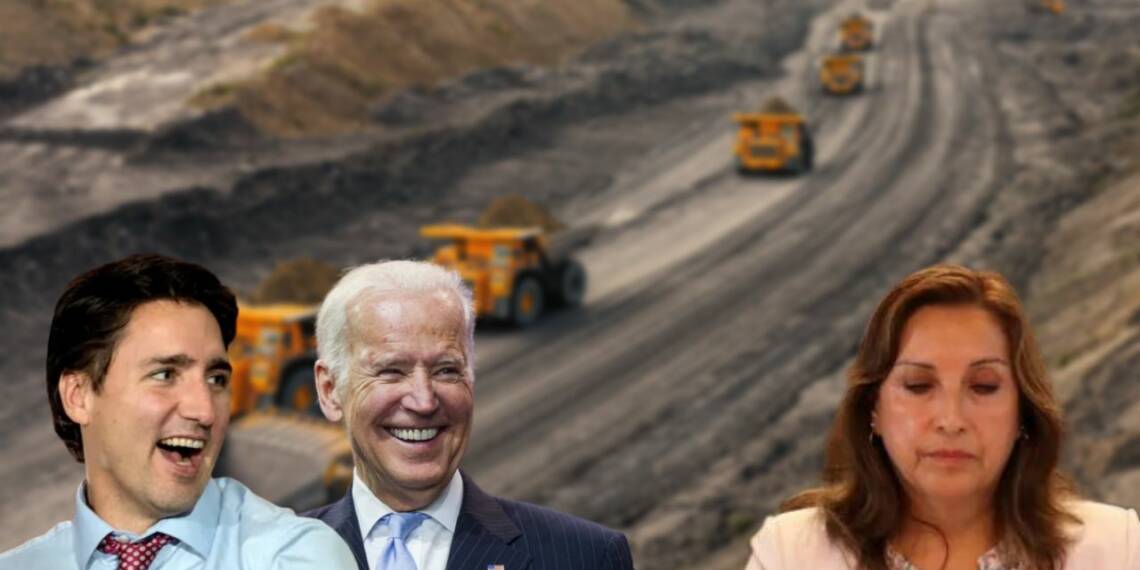Two months after the overthrow of Peru’s democratically-elected President Pedro Castillo, US and Canada has been providing assistance to the regime which is held responsible for the deaths of 60 civilians.
The US-backed coup was followed by three massacres and 1,229 civilians wounded, according to official Peruvian sources. Additionally, numerous arrests have been made without due legal process.
Protests remain active till date. 72 roadblock points on national highways, and an indefinite strike that began on January 4th, 2023 still continue in areas of southern Peru.
According to a poll conducted by the Institute of Peruvian Studies, Congress has an approval rating of only 9%, and 71% disapprove of Dina Boluarte’s presidency. This unrest was sparked by the overthrow of Castillo and the installation of Dina Boluarte; as well as by the rejection of the right-wing Congress. It is now being exploited by Canada and its mining companies.
Canada’s support for Peru’s coup
Canada expressed its profound worries in a tweet from Ambassador Louis Marcotte on the day of President Castillo’s ousting. It also, stated its recognition of Dina Boluarte, who was sworn in only a few hours after Castillo’s arrest.
Canada is deeply concerned by events today in Peru. We are monitoring the situation closely and call on all democratic institutions to act in accordance with the constitution and rule of law.
— louis marcotte (@louiscmarcotte) December 7, 2022
Foreign Affairs Minister Melanie Joly then affirmed the Canadian government’s “support for the interim government of President Boluarte” during a call with Peru’s Foreign Minister, Ana Cecilia Gervasi.
Canada values its longstanding friendship with #Peru. We look forward to working with President Boluarte and all Peruvians to uphold common values, including democracy, human rights and the rule of law.
— Foreign Policy CAN (@CanadaFP) December 9, 2022
The Trudeau administration’s reaction to Peru’s crisis is similar to the one it had during the Bolivia coup in 2019. In Bolivia, Canada was among the first to recognize the Añez regime amidst the fierce repression that occurred. As a matter of fact, Canada has the same ambassador for both countries.
Canada’s motives in Peru
The fact is Canada never supported Pedro Castillo. It preferred to align itself with its more neoliberal opponents. With their substantial investment of CAD $9.9 billion, Canadian mineral exploration companies are the largest investors in Peru.
Read More: US’ modern-day colonization of Peru has begun
Mining and resource extraction firms in Canada always keep an eye on what is happening politically in Latin America. Since policy changes can have a major impact on their operations and ability to acquire contracts.
At the PERUMIN 35 Mining Convention, the Canadian ambassador was accompanied by mining companies such as Hudbay Minerals, who were present at the Canada Pavilion.
After the coup, Louis Marcotte, Ambassador of Canada to Peru and Bolivia, met with Peru’s Mining Minister, Oscar Vera Gargurevich. He encouraged investment from Canadian companies in the fields of mining and hydrocarbons, in addition to the growth of electromobility.
A su turno, el embajador expresó el interés de Canadá por alentar inversiones de sus compañías en minería e hidrocarburos, así como en el desarrollo de la electromovilidad. Destacó además que Canadá es el principal inversionista en Perú en materia de exploración minera. pic.twitter.com/xkOe1aRN51
— Ministerio de Energía y Minas (@MinemPeru) January 18, 2023
Vera Gargurevich affirmed his ministry’s presence at the notorious PDAC mining convention in Toronto, Ontario, in March. Peru will pursue new foreign investors at the convention.
Canada’s meddling in Latin America
Ottawa has a history of endorsing unpopular neoliberal regimes with a documented history of violent repression. For example, like that of Ivan Duque, Juan Orlando Hernandez, Lenin Moreno, Guillermo Lasso, Jeanine Añez. It has undermined democratically elected governments like Evo Morales, Daniel Ortega, Nicolas Maduro and Manuel Zelaya. These leaders sought to protect their nation’s sovereignty and resources from foreign exploitation through nationalization.
They wanted resources to be utilized to benefit their own people instead of corporate profits. Castillo campaigned on the platform of restoring popular control over Peru’s natural resources through nationalization.
This would have had an impact on Canadian interests.
Also Read: US’ modern-day colonization of Peru has begun
Canada isn’t the only foreign nation which is eyeing Peru’s resources. US ambassador Lisa Kenna too met with Peru’s mining minister for “investments.” Clearly, US and Canada see this as opportunity to loot Peru’s wealth. And, as of now, they are succeeding in it.








